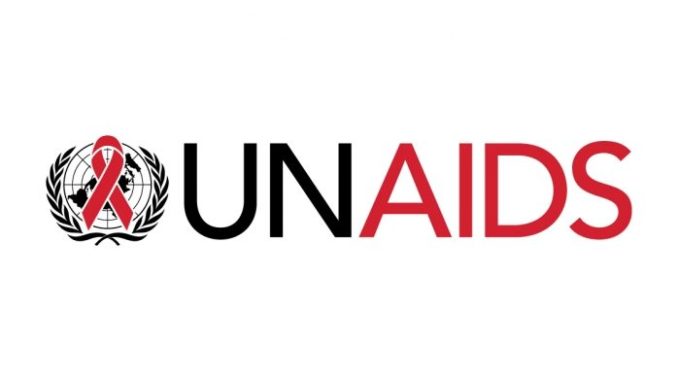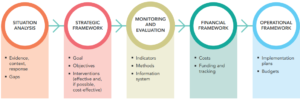
Table of Contents
UNAIDS Gender Assessment Tool (GAT)
- The UNAIDS Agenda for Accelerated Country Action for Women, Girls, Gender Equality and HIV 2010-2014 (the Agenda) was introduced in 2010 and provided a series of strategic actions to better address the needs and safeguard the rights of women, girls, and gender equality in HIV responses.
- The Agenda, which was designed around three suggestions, concentrated on implementation at the national level.
- According to a mid-term evaluation of the Agenda that was given to the UNAIDS Programme Coordination Board in December 2012, a more methodical approach to data collecting is required for evidence-based planning and budgeting for gender-transformative HIV solutions.
- In order to make gender assessments easier, the UNAIDS Secretariat oversaw a participatory, multi-stakeholder approach to design a gender assessment instrument.
- Gender assessments are extensive programs that aim to pinpoint the needs of women and girls in all their diversity in the context of HIV at the national level.
- They are led by national stakeholders and partners.
Purpose of GAT
- The gender assessment tool for national HIV responses (GAT) is designed to help countries evaluate the HIV epidemic, context, and response from a gender perspective and to make HIV solutions gender transformational, equitable, and based on human rights, and as such, more effective.
- The Gender Assessment Tool (GAT) is intended to assist in the preparation or evaluation of national strategic plans and to provide information for submissions to country investment cases and the Global Fund to Fight AIDS, TB, and Malaria (Global Fund).
- The UNAIDS Strategy 2016–2021 and the Sustainable Development Goals both stress the importance of a holistic approach that takes into account the whole range of peoples’ health and rights concerns.
- In order to address the gender-related obstacles and problems in the HIV response, the GAT also makes it possible to integrate gender equality into other strategic, planning, and implementation processes, such as United Nations Development Assistance Frameworks.
- Also, it is a tool for developing the technical skills of national authorities, civil society organizations, and other significant stakeholders. For stakeholders who might have their own needs for gender analysis, the GAT is a useful tool.
- The GAT can be used by government organizations and civil society groups to gather and evaluate data for national and shadow reports on the implementation of treaty bodies and international instruments.
Key features of GAT
- Combines gender analysis with a gap analysis of programs and policies
- Harmonization and alignment
- Flexibility and adaptability
- Combining many measurement methods and data sources
- Qualitative techniques capture the experiences, viewpoints, attitudes, and feelings of individuals
A Four-step Process for Creating a Gender-inclusive HIV Response
- The GAT uses four stages and evidence-based strategies to address the HIV epidemic.
- They are based on data from research and the perspectives of different stakeholders, including decision-makers, experts, and key populations like transgender people, gay men, and other men who have sex with men.
- They are also informed by civil society organizations, international organizations, academia, and women living with or affected by HIV.
- In order to determine priorities for interventions, including gender responsive budgeting, and to address the unique needs of women and girls as well as of critical populations, the GAT directs the gender analysis of the HIV pandemic, context, and response.
1. Preparing for the gender assessment
- This includes six major steps to provide guidance for preparatory work towards guaranteeing the quality of the gender assessment process and outlining the necessary steps.
- Step 1: Secure high-level commitment
- Step 2: Establish a gender assessment team
- Step 3: Develop a gender assessment framework
- Step 4: Develop a gender assessment resource plan
- Step 5: Collect relevant documents
- Step 6: Organize a gender assessment inception workshop with all relevant stakeholders
2. Knowing the national HIV epidemic and context
- By methodically gathering data on who, why, and how, the issue, the groups at risk, and the accompanying variables (determinants) and impacts are defined.
- This stage offers important questions for comprehending the HIV epidemic from the viewpoint of gender, the context of behavior, and any pertinent socioeconomic, cultural, political, and economic issues.
- The questions concern the subsequent steps:
- Step 7: HIV prevalence and incidence and behavioural information
- Step 8: Social, cultural and economic factors
- Step 9: Legal and political factors
3. Knowing the national HIV response
- The primary information required to evaluate the national response based on gender is provided by this stage, which provides important questions to help understand the national HIV response from a gender perspective.
- Step 10: Gender equality in HIV policies and programmes
-
- Step 10.1 The overall HIV response
- Step 10.2 Meaningful participation
- Step 10.3 Coordination of gender equality within the HIV response
- Step 10.4 Gender equality in the policy framework
- Step 10.5 Awareness and knowledge of gender equality
- Step 10.6 Assessing expenditure allocation
- Step 11: A comprehensive HIV response
- Step 11.1 HIV prevention
- Step 11.2 Treatment
- Step 11.3 Care and support
- Step 11.4 Gender-based violence and violence against women and girls
- Step 11.5 Sexual and reproductive health and rights
- Step 11.6 Violations of human rights in services and programmes
- Step 12: Gender considerations according to the community
-
- Step 12.1 Women and girls
- Step 12.2 Men and boys
- Step 12.3 Key populations
- Step 12.4 Young people
4. Analysing and using gender assessment findings for a gender-transformative HIV response
This phase offers instructions on how to apply the results of the gender assessment to affect budgeting, agendas, and policy strategies.
The stakeholders involved in the evaluation should now utilize the accompanying matrix to identify any significant gaps and opportunities that resulted from the findings.
- Task 1: Fill in the columns of the analysis matrix with the summaries from stages 2 and 3. (Table below)

- Task 2. Analyze the information in Table above to find any discrepancies between epidemiology, context, and reaction, as well as any gaps and untapped potential for the HIV response.
- Task 3: Use the consolidated findings from stages 2 and 3 and the suggested interventions found using the GAT to create a brief and simple narrative report. The report should provide specific suggestions for the necessary policy and program activities, informed by the epidemiological data and research that is currently available.
- Task 4: Create a plan that is results-based. The anticipated outcomes should be determined as part of a strategic planning process based on the gaps found.

Figure: Result based planning
- Task 5: Create a plan for advocacy that outlines the methods and actions that can be used to successfully accomplish priorities. This necessitates carefully considering what is necessary to achieve policy objectives.
- Task 6: Create a communication plan to spread the important goals identified by the gender evaluation.
- Task 7: Set aside money to carry out the advocacy and communication plan.
- Task 8: Create a fundraising plan to assist in putting the gender assessment’s findings and top recommendations into practice.
- Task 9: Create a gender assessment monitoring approach to show how the HIV response has changed in relation to gender over time.
References and For More Information
https://www.unaids.org/sites/default/files/media_asset/unaids-gender-assessment-tool_en.pdf